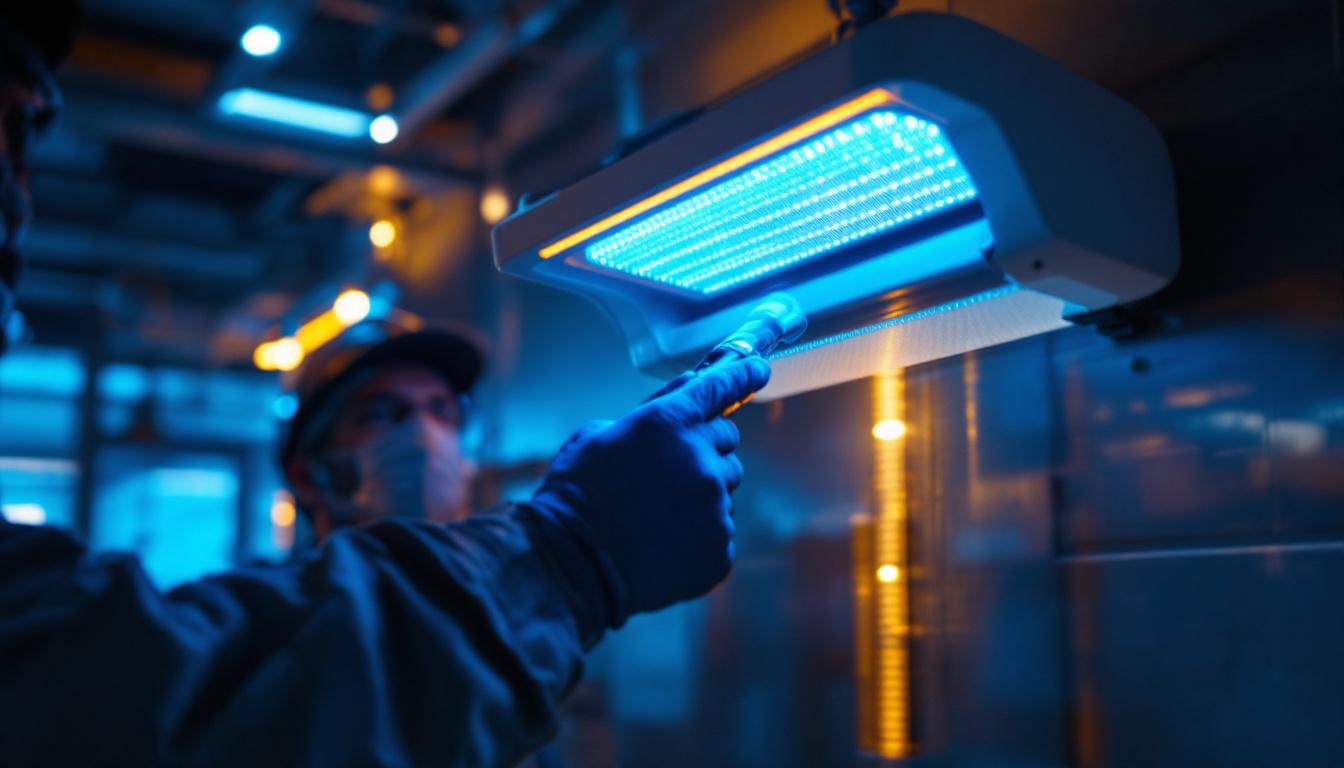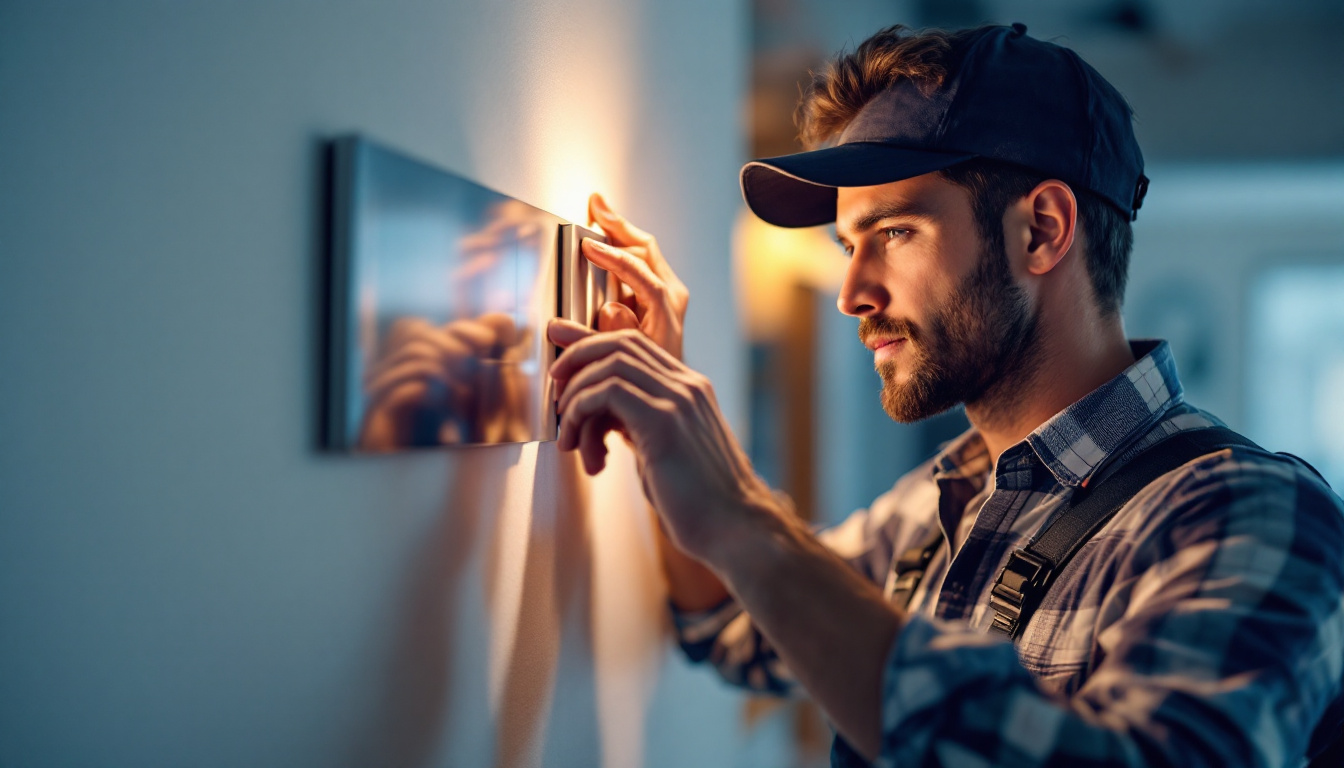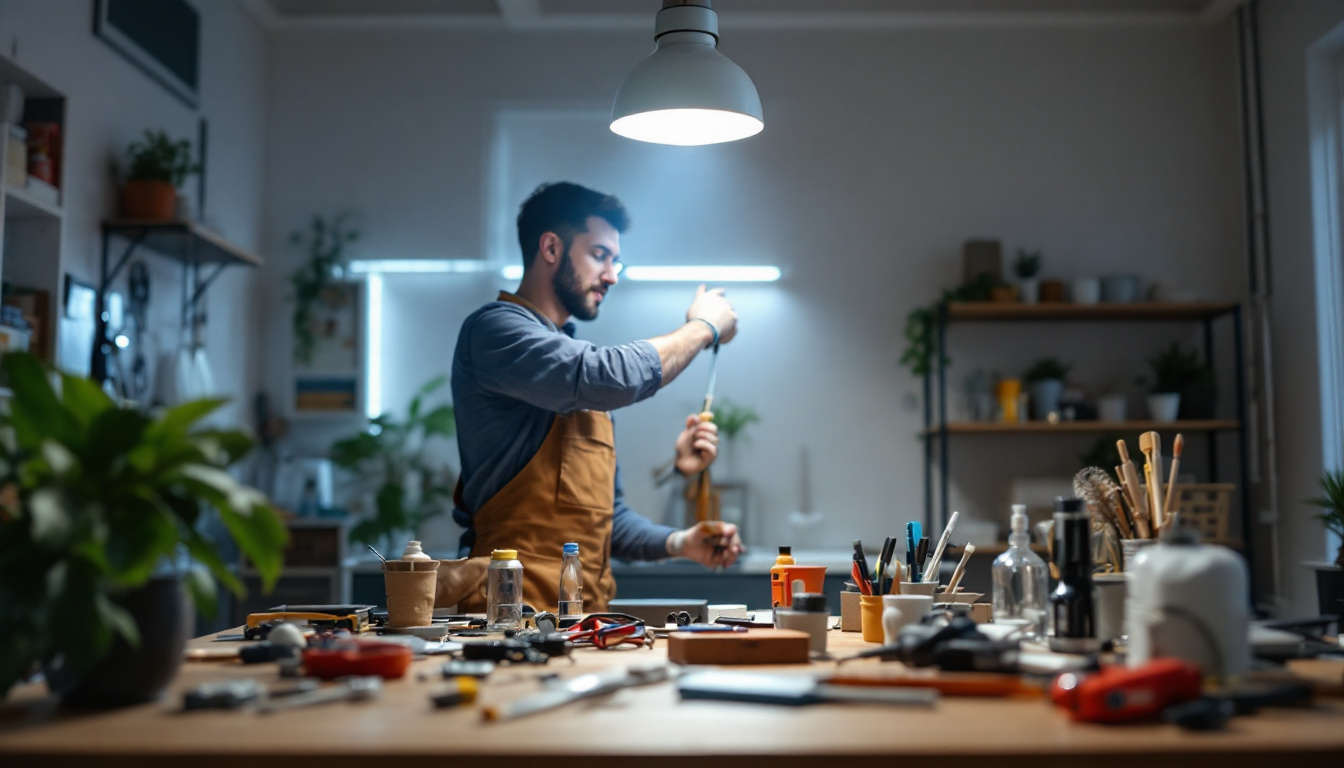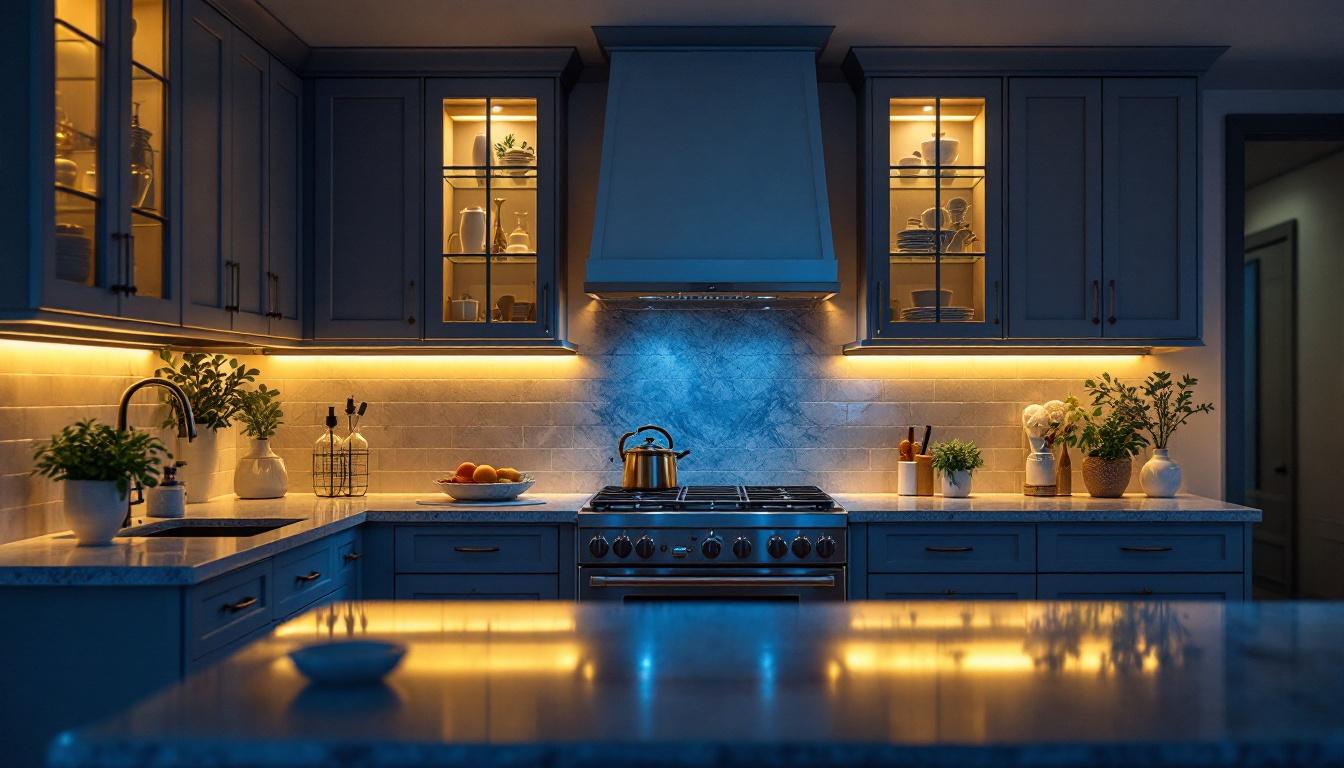
In the realm of lighting installations, safety is paramount. As technology advances, so do the methods and tools available to lighting contractors. One such innovation that has gained traction is the UV treatment lamp. This article delves into how UV treatment lamps enhance safety in lighting installations, exploring their functionality, benefits, and the best practices for their use.
UV treatment lamps utilize ultraviolet light to disinfect and purify surfaces, air, and water. This technology has been adopted across various industries, including healthcare, food processing, and now, lighting installations. By employing UV light, these lamps effectively eliminate harmful microorganisms, thereby creating safer environments. The versatility of UV treatment lamps has made them a popular choice in settings ranging from hospitals, where infection control is paramount, to schools and public transportation systems, where maintaining hygiene is crucial for public health.
The effectiveness of UV treatment lamps lies in their ability to disrupt the DNA of bacteria, viruses, and other pathogens. When these microorganisms are exposed to UV-C light, their cellular structure is damaged, rendering them inactive and unable to reproduce. This process is not only efficient but also quick, making UV treatment an ideal solution for ensuring safety in various settings. Additionally, UV light can penetrate surfaces and reach areas that traditional cleaning methods may miss, providing a comprehensive disinfection solution that enhances overall sanitation efforts.
There are several types of UV treatment lamps available, each designed for specific applications. The most common types include low-pressure mercury vapor lamps, medium-pressure mercury vapor lamps, and UV LEDs. Each type offers unique benefits, making it essential for lighting contractors to select the appropriate lamp based on the installation requirements. For instance, low-pressure mercury vapor lamps are highly effective for water treatment applications due to their high UV output and efficiency, while UV LEDs are gaining popularity for their energy efficiency and long lifespan, making them ideal for portable or residential use. Furthermore, advancements in technology have led to the development of hybrid systems that combine different types of UV lamps, maximizing their effectiveness and expanding their range of applications.
In lighting installations, UV treatment lamps serve multiple purposes. Beyond their disinfecting capabilities, they also contribute to the overall safety and efficiency of lighting systems. Understanding these roles can help contractors make informed decisions when integrating UV technology into their projects.
One of the primary benefits of UV treatment lamps is their ability to improve indoor air quality. In spaces where lighting installations are prevalent, such as offices, schools, and hospitals, maintaining clean air is crucial. UV lamps can be integrated into HVAC systems to continuously purify the air, reducing the risk of airborne diseases and allergens. This proactive approach not only fosters a healthier environment but also enhances productivity and comfort for occupants. Studies have shown that improved air quality can lead to fewer sick days and higher employee satisfaction, making it a worthwhile investment for businesses and institutions alike.
Lighting fixtures and installations can harbor bacteria and viruses, especially in high-traffic areas. By incorporating UV treatment lamps, contractors can ensure that surfaces remain sanitized. This is particularly important in settings like hospitals and restaurants, where hygiene is critical. Regular disinfection through UV treatment can significantly lower the risk of contamination. Additionally, the use of UV lamps can complement traditional cleaning methods, providing a thorough layer of protection that is both effective and efficient. The ability to automate UV disinfection processes also means that these systems can work around the clock, ensuring that surfaces are continuously maintained without the need for constant human oversight.
Another compelling advantage of UV treatment lamps is their energy efficiency. Unlike conventional lighting solutions, UV lamps are designed to consume less power while delivering high-intensity ultraviolet light. This not only reduces electricity costs but also extends the lifespan of the lighting installation as a whole. By minimizing the frequency of bulb replacements and maintenance, contractors can save both time and resources. Moreover, the integration of UV technology aligns with sustainability goals, as it supports the reduction of waste and promotes eco-friendly practices in building design.
UV treatment lamps are not limited to just air and surface disinfection; they also find applications in a variety of specialized fields. For instance, in agricultural settings, UV lamps can be utilized to control pests and pathogens in greenhouses, promoting healthier plant growth without the need for harmful chemicals. In the food industry, UV light can be used to treat water and surfaces, ensuring that food safety standards are met. The versatility of UV technology opens up numerous possibilities for contractors looking to innovate and enhance their lighting installations across different sectors.
The adoption of UV treatment lamps in lighting installations comes with a plethora of benefits. These advantages not only enhance safety but also improve the overall efficiency of lighting systems. Here are some key benefits to consider:
While the initial investment in UV treatment lamps may seem substantial, the long-term savings can be significant. By reducing the need for chemical disinfectants and minimizing maintenance costs, contractors can achieve a more cost-effective solution. Additionally, the energy efficiency of UV lamps often leads to lower electricity bills, further enhancing their economic appeal.
In an era where sustainability is a priority, UV treatment lamps stand out as an environmentally friendly option. Unlike traditional cleaning methods that rely on harsh chemicals, UV technology uses no harmful substances. This not only protects the environment but also ensures a safer space for occupants.
UV treatment lamps are versatile and can be used in various applications beyond standard lighting installations. From water purification systems to air disinfection in commercial buildings, the adaptability of these lamps makes them an invaluable tool for contractors. This versatility allows for innovative solutions tailored to specific project needs.
To maximize the benefits of UV treatment lamps, lighting contractors should adhere to best practices during installation and maintenance. These guidelines ensure safety and effectiveness in disinfection efforts.
The effectiveness of UV treatment lamps is highly dependent on their placement. Contractors should consider factors such as distance from surfaces, angle of exposure, and duration of exposure to UV light. Proper installation not only enhances disinfection but also minimizes the risk of UV exposure to humans and pets.
Like any technology, UV treatment lamps require regular maintenance to ensure optimal performance. Contractors should establish a routine for cleaning the lamps, checking for bulb degradation, and replacing bulbs as needed. Additionally, monitoring the effectiveness of the UV treatment can help identify any issues early on, ensuring consistent safety standards.
While UV treatment lamps offer numerous benefits, it is essential to approach their use with caution. Understanding safety considerations is crucial for both contractors and end-users.
Direct exposure to UV light can pose health risks, including skin burns and eye damage. Contractors must ensure that UV treatment lamps are installed in a manner that minimizes exposure to humans and pets. Utilizing protective covers or shields can further enhance safety during operation.
Contractors should be aware of local regulations and guidelines regarding the use of UV treatment lamps. Compliance with these regulations not only ensures the safety of installations but also protects contractors from potential liabilities. Staying informed about industry standards is essential for maintaining a reputable practice.
Examining real-world applications of UV treatment lamps can provide valuable insights into their effectiveness and versatility. Here are a few case studies that highlight successful implementations in lighting installations.
In a large hospital, the integration of UV treatment lamps into the lighting system significantly improved infection control measures. By installing UV lamps in patient rooms and common areas, the facility was able to reduce the incidence of hospital-acquired infections. The results demonstrated a marked improvement in patient outcomes and overall satisfaction.
A popular restaurant chain implemented UV treatment lamps in their dining areas and kitchens. This not only enhanced the cleanliness of the environment but also reassured customers about their safety. The restaurant reported a decrease in foodborne illnesses and an increase in customer trust, leading to higher patronage.
The landscape of UV treatment technology is continually evolving. As research progresses, new advancements are expected to enhance the capabilities and applications of UV treatment lamps in lighting installations.
Future UV treatment lamps are likely to feature innovative designs that enhance their efficiency and ease of use. This could include smart technology integration, allowing for automated monitoring and control of UV exposure levels. Such advancements will make it easier for contractors to implement and manage UV treatment systems.
As awareness of the benefits of UV treatment continues to grow, its applications are expected to expand beyond traditional settings. Emerging industries, such as agriculture and transportation, may adopt UV technology for disinfection purposes, creating new opportunities for lighting contractors to explore.
UV treatment lamps represent a significant advancement in ensuring safety within lighting installations. By effectively disinfecting surfaces and improving air quality, these lamps offer a multifaceted approach to enhancing safety standards. As technology progresses, the versatility and applications of UV treatment lamps will only continue to expand, presenting exciting opportunities for lighting contractors.
Incorporating UV treatment lamps into lighting installations not only elevates safety but also contributes to a healthier environment for occupants. By adhering to best practices and staying informed about industry trends, contractors can leverage this technology to create innovative and safe lighting solutions.
Ready to enhance the safety and efficiency of your lighting installations with the latest UV treatment lamps? Look no further than LumenWholesale, where we offer an exceptional range of spec-grade lighting products at wholesale prices that simply can’t be beaten. Our commitment to quality and affordability ensures that you can access the best lighting solutions for your projects without the burden of inflated costs. Plus, with the convenience of free shipping on bulk orders, you can trust that you’re getting premium value every time. Elevate your lighting installations today by visiting Wholesale Lighting at the Best Value and discover the LumenWholesale difference.

Discover essential tips and common pitfalls for lighting contractors in our comprehensive guide on light dimmers.

Discover why ballast bypass is essential for modern lighting projects.

Discover the pitfalls lighting contractors often encounter with industrial LED fixtures.

Discover expert insights and practical tips on under cabinet ribbon lighting tailored for lighting contractors.